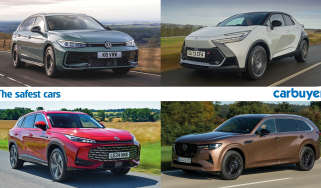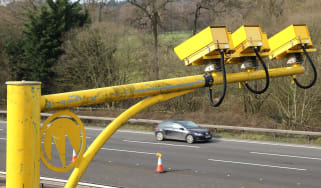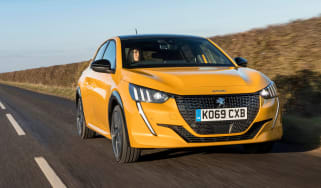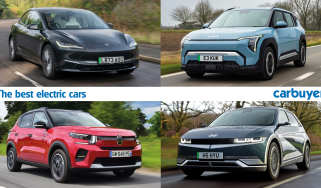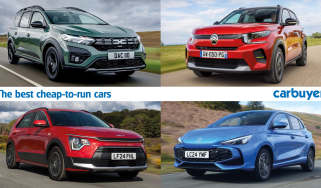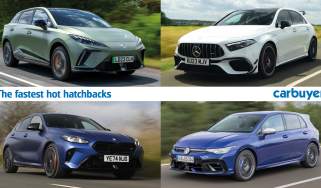Euro NCAP: how safe is my car?
Euro NCAP is the independent body that evaluates car safety – we cover everything you need to know
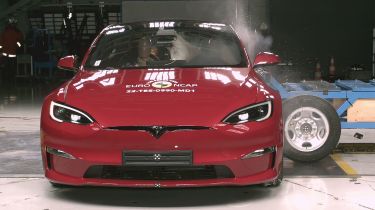
For many of us, safety sits at the top of our priority list when shopping for a new car. There was a time when bigger generally meant safer, but with the advent of new technologies, it’s no longer quite that simple. Thankfully, Euro NCAP exists to carry out standardised tests that put cars through their crash-safety paces.
Established in 1997, Euro NCAP is an independent organisation that buys cars anonymously before subjecting them to stringent crash tests. Based on the car’s crash test performance, as well as any crash-avoidance technology fitted to the car, it is awarded a star rating from zero to five. This score can then be used by the consumer to compare different makes and models.
Today, many new cars achieve a five-star Euro NCAP rating, but some smaller and more affordable models still miss out on the top score. Crash safety and crash-avoidance technology has progressed rapidly over the last decade, resulting in the newest cars being safer than ever.
Euro NCAP’s requirements are constantly evolving, however, with new and ever more stringent tests added on a regular basis – including as recently as mid-2023. But how does Euro NCAP work out its ratings and what do they mean for you?
What is Euro NCAP and how does it work?
Euro NCAP ('New Car Assessment Programme') is an organisation that tests the safety of cars you can buy in Europe. It's not interested in other factors, such as fuel-efficiency or top speed – its only concern is safety. That includes how safe a car is if it's involved in a collision, as well as what safety technologies are fitted to the car.
Euro NCAP buys cars anonymously and independently crash-tests them, using the same rigorous procedure for every car and awarding each one a rating out of five stars.
Nearly three decades since the first Euro NCAP crash tests took place, a five-star result – awarded to only the very safest cars – has become commonplace for most new cars launched in Europe.
However, Euro NCAP testing is not mandatory for a car to be sold in Europe. Legally, all new cars must achieve ‘Type Approval’ by meeting a set of minimum safety requirements outlined by the EU. While this provides peace of mind, knowing that all new cars pass a minimum safety benchmark, it doesn’t allow car buyers to compare the relative safety of different models. This is where Euro NCAP is useful – the scoring system provides car buyers with an independent, transparent safety score.
Euro NCAP’s safety testing goes beyond the legal requirements, too. For example, a car that scores a zero-star NCAP rating will still meet the minimum legal safety standard, but it will be less safe than a car awarded the full five stars.
Euro NCAP cannot test every make, model and variant of a car, though. Instead, Euro NCAP members (a selection of government departments and independent organisations from across Europe) 'sponsor' the test of a vehicle that deserves some scrutiny – usually the biggest-selling models in a particular segment or market. Car manufacturers can also sponsor their own vehicles for testing by Euro NCAP. Vehicles for testing are purchased anonymously from normal car dealers before being prepared for the tests.
What is Euro NCAP retesting?
It's important to remember that a Euro NCAP star rating only serves as a snapshot in time. Although a new car might excel in the most stringent of crash tests available when it's launched, you can bet that the car that replaces it in the showroom several years later will be even safer.
Due to this continual improvement in car safety, Euro NCAP star ratings expire after six years, although a car can be retested at any time. The organisation now performs reviews every 12 months, checking that safety equipment fitted to the test car is still provided, so the safety score is still representative of the car currently on sale. If a car is facelifted or updated, Euro NCAP will work with the manufacturer to check that its original test findings are still valid.
What do Euro NCAP results mean?
On the Euro NCAP website, the results of each of these tests are published in extreme detail. You can use the site to search for every measured part of the test, from whether the autonomous emergency braking works to the danger to individual body parts for infant occupants.
But this approach is generally too complicated for most uses. In order to simplify things, Euro NCAP gives each car an overall star rating out of five. For example, the Hyundai i10 scores three out of five, the Ford Puma scores four out of five and the Volkswagen Golf scores five out of five.
So if a five-star car crashes into a three-star car, the five-star car will fare better?
Not necessarily. Euro NCAP assessments are carried out with a car's class in mind. That means huge 4x4s aren’t compared directly to tiny city cars. As such, Euro NCAP results aren't always comparable.
Generally speaking, the taller a car is, the better it will fare in an accident. This is because a taller car will more heavily damage a lower car if they collide. As such, a three-star 4x4 might still come off better than a five-star city car if they crash into each other.
To help understand how Euro NCAP rates cars, there's a quick guide to star ratings below:
- 5 stars – Overall good performance in crash protection. Well-equipped with robust crash protection technology
- 4 stars – Overall good performance in crash protection. Additional crash avoidance technology may be present
- 3 stars – Average to good occupant protection. Lacking crash avoidance technology
- 2 stars – Nominal crash protection, but lacking crash avoidance technology
- 1 star – Marginal crash protection, little to no crash avoidance technology
- 0 star – Meets Type Approval but lacks critical modern safety technology
Eek – my car only scored three out of five!
There's no need to panic. Modern cars are generally very safe, and a three-star car built in the past few years could be much better at protecting its occupants than a five-star car from the 2000s.
In addition, a car can be marked down for missing technology, rather than simple crash protection and body strength. For example, a new model might lose points if it lacks a seatbelt warning alarm.
And as manufacturers build safer and safer cars, Euro NCAP devises tougher and tougher tests. The tests undergone by cars this year will be more thorough and more demanding than those in 2012 or 2008. And cars are re-tested and re-evaluated all the time, ensuring that a model's Euro NCAP safety rating remains current throughout its time on sale.
Realistically, the difference between a three-star and a five-star car won't necessarily protect you in an accident. Safe driving and correct use of the fitted safety features is as important in a five-star-rated car as it is in any other car.
What about the new dual rating system?
Euro NCAP introduced a dual rating system in 2016, although not all cars will be awarded two different sets of stars. If you see a car with two different star ratings, one refers to the car’s score in its most basic specification, while the other shows how the car fared when fitted with an optional safety pack. These packs tend to include advanced safety technology like autonomous emergency braking and a lane-departure warning system.
For more information, and to find out how your car scores, visit the Euro NCAP website or take a look at our run-down of the top 10 safest cars.
How are cars tested?
There are several tests, each designed to reflect real-world accidents as closely as possible. The range of tests has recently been expanded to accommodate some of the more sophisticated safety technology now being offered on cars, such as automatic braking and speed assistance.
One of the ways that Euro NCAP measures the safety of cars is with crash-test dummies. These highly advanced human-sized dummies are full of sensors that record what might happen to a real person if they experienced the same impact. The tests look at adult and child occupants separately, with smaller crash test dummies used to simulate infants in child seats.
Frontal impact
This is a test of a car's safety performance in a front impact with another vehicle. Before 2020, this involved the test vehicle crashing into a barrier at 40mph and Euro NCAP measuring how well its occupants were protected. However, from 2020 onwards the test has changed so that the car travelling at 31mph (50km/h) collides with a moving barrier travelling at the same speed, better representing a collision between two vehicles.
This tests airbags, seatbelts and the general structural strength of the car. From 2020, Euro NCAP also assesses the damage the test car causes to the car it collides with. This move should help indicate the potential for larger vehicles to cause unacceptable damage to smaller cars in accidents.
Car-to-car-side impact
This tests how a car would protect its occupants if struck by another vehicle from the side. A large, heavy robot crashes into the side of the car (roughly where the doors are) and any 'injuries' to the dummies are recorded. For 2020, this test was made more stringent, with the far-side crash-test dummy now also evaluated, along with any injuries caused by occupants colliding with each other in a side impact. This will help assess the latest generation of central airbags that are designed to prevent these injuries.
Pole side impact
This is roughly what happens if you lose control of your car and it skids sideways into a tree or lamp-post. It's similar to the car-to-car-side test, but with the car moving rather than the object. The pole comes into contact with the car roughly in line with the doors.
Pedestrian protection
It isn't just a car’s occupants that Euro NCAP cares about. Pedestrians can be protected with good car design, too. This test simulates collisions with adult and child pedestrians and assesses how well the vehicle's design protects them.
Child protection systems
Euro NCAP assesses how well a car can accommodate proper child safety seats in the safest configuration. The dummies used in the crash tests roughly correspond with an 18-month-old and a three-year-old – these sit in child restraints on the back seat.
Whiplash
Neck injury caused by sudden crashes can be devastating, but can be somewhat alleviated with good car design. Interior features like head restraints can mitigate the risk of whiplash injury.
Speed assistance systems and seatbelt reminders
Features such as speed assistance (which remind you what the speed limit is on a particular stretch of road) and seatbelt reminders (which beep until you put your seatbelt on) are considered important by Euro NCAP.
Autonomous emergency braking (AEB)
This relatively new technology enables the car to slow itself down if it detects a collision is imminent. Tested on three types of road (roughly equating to urban roads, rural roads and motorways), these systems can prevent some serious crashes. Euro NCAP examines how well they work.
AEB Vulnerable Road Users
Introduced in 2018, AEB Vulnerable Road Users (AEB VRU) is the newest Euro NCAP area. It includes tests that determine how well a vehicle can detect cyclists and avoid collisions with them, potentially saving lives.
For 2023, the regime was expanded to include an assessment of AEB’s ability to detect and respond to motorcycles in the car’s path, or when turning. Not only this, but Euro NCAP is also tightening up on the ability for AEB to prevent head-on collisions with oncoming vehicles and crossing traffic at T-junctions.
Cars will now be tested for collision-avoidance to see if a small child can be recognised when reversing, and for their ability to warn the driver or delay opening a door into the path of a passing cyclist.
Electronic Stability Control
Modern cars include complex technology that helps prevent skidding. This is one of the most important developments in car safety, as it means that a slight loss of control or grip (particularly in wet or slippery conditions) can be managed by the car rather than escalating into a potentially lethal skid.
Vehicle Submergence
This new test for 2023 will check any car with electrically-operated door handles, and is designed to ensure that windows and doors remain operable when the vehicle is submerged in water. This must be for a long enough period that any occupants can escape from the vehicle.
Child Presence Detection
From 2023, cars will now be assessed for their ability to notify the driver or emergency services if a child is accidentally left behind in a locked car.
Euro NCAP categories explained
In the time since Euro NCAP ratings were first introduced in 2009, they have evolved to include four important areas. Vulnerable Road Users was introduced in 2018 to tell owners how adept a car is at avoiding accidents with pedestrians and cyclists – a rapidly evolving area of safety technology.
Adult occupant protection
A series of crash tests determines how safe the interior of the car is for adults, generating an overall score out of 100%. The subject vehicle is crashed into rigid and deformable barriers at set speeds, experiences a side impact with a pole and a mobile barrier representing another vehicle. Crash-test dummies loaded with precise sensors record the impact an occupant would experience, while high-speed video records exactly how the car deforms and safety features like airbags function.
Child occupant protection
Euro NCAP also scores the protection a car offers child occupants out of 100%. This aspect of the test was introduced in 2013 and added to in 2016. It assesses the protection provided by the vehicle's child-restraint systems in a crash and its ability to accommodate child seats and restraints of different designs and sizes, measuring the location of belt buckles, ISOFIX anchorage points, along with the ease of installation of a range of child seats.
Vulnerable Road Users
This section of the test was named Vulnerable Road Users (VRU) in 2018. While the first two sections above measure safety for the driver and passengers in a crash, this category shifts the focus to how well a vehicle protects pedestrians and cyclists from harm. In a frontal collision with a crash-test dummy, head, upper leg and lower leg impacts are measured and scored.
Autonomous Emergency Braking (AEB) technology that scans the road ahead for pedestrians and cyclists is also tested. Designed to automatically identify potential hazards and warn the driver, these systems can automatically apply the brakes to help mitigate or avoid a collision. In 2018 a new AEB Cyclist test was added, assessing the ability of new models to detect and react to crossing cyclists and cyclists heading in the same direction as the car.
Safety Assist
The Safety Assist category judges the inclusion and performance of driver assistance technologies that "support safe driving to avoid accidents and mitigate injuries". This includes everything from seatbelt reminders and fatigue warnings that prompt you to pull over and take a break, to speed limiters, lane-departure warning systems, electronic stability control and autonomous emergency braking.
How often does Euro NCAP update its testing procedure?
Euro NCAP updates its testing protocol every two years, with the most recent update coming into force in mid-2023. The test protocols have changed quite a lot since the first tests in 1997, in order to more accurately assess the latest crash safety structures and technologies.
A revision was planned for 2022, though due to the impact of the coronavirus pandemic on both Euro NCAP and the wider car industry, this was postponed until the following year.
These regular changes mean scores aren’t wholly comparable across different years – a car that earned a five-star rating in 2019 may not have done so if it had been assessed in 2020, for example. As such, you should only directly compare the Euro NCAP scores of cars that were tested in the same year, and be aware that cars assessed more recently will have been put through a more stringent process than older cars.
What are Euro NCAP’s Assisted Driving tests?
In addition to the overall safety ratings, Euro NCAP also runs a separate assessment called “assisted driving gradings”. These don’t have any impact on the overall star safety rating a car receives, though they are Euro NCAP’s way of putting to the test the various autonomous driver aids that are becoming more and more commonplace on new cars.
Instead of a star rating, cars are given one of four grades: “Entry”, “Moderate”, “Good” or “Very Good”. An Entry grade is given to cars with limited safety assistance systems, whereas a Very Good rating is awarded to vehicles with more advanced systems, which can help the driver out in more challenging scenarios.
To achieve the highest possible Very Good grade, a car’s safety assists need to perform well in the two criteria Euro NCAP assesses them for: Safety Backup and Assistance Competence. The former judges a car’s safety tech not just on their ability to prevent an accident if the driver isn’t able to intervene in time, but to also disengage when they’re unable to work as intended in situations such as extreme weather or a sensor failure.
To earn a strong score in the Assistance Competence portion of the test, a car’s safety assists are not only judged on their ability to avoid an accident, but also to ensure the driver is still engaged when behind the wheel and isn’t wholly relying on the car’s assists to avoid the accident in the first place.
Even the name of the particular driver's aid can affect its score. Euro NCAP argues that tech explicitly described as an assist, makes clear its purpose to help the driver, whereas something with the word ‘Auto’ in its name can give drivers a false impression of what the driver aids are capable of.
Want peace of mind out on the road? Check out our list of the top 10 safest cars you can buy...
Recommended
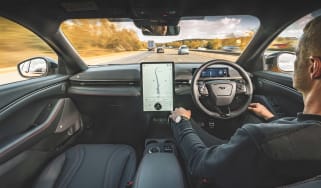
In-car safety assistance systems leaving drivers confused and dissatisfied
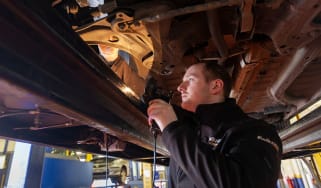
MoT guide: cost, info and what happens if your car fails
Most Popular
Tips & advice

Car dashboard warning lights: what does each symbol mean?
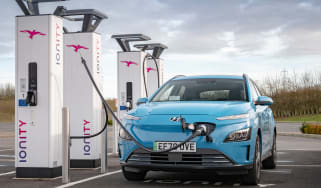
Electric car charging stations: public networks, charger types, apps and maps



